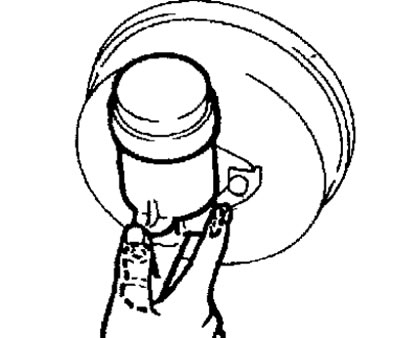- It is not recommended to use the fluid drained from the brake system to fill the reservoir, as it is saturated with air and moisture and may be contaminated.
- Always use genuine DOT 3 or DOT 4 brake fluid.
- The use of non-genuine brake fluid can cause corrosion and shorten the life of the brake system. Avoid mixing the recommended fluid with other types of brake fluids.
- Brake fluid is hygroscopic, that is, it absorbs moisture from the air, and therefore fluid stored for a long time in an open container is not recommended.
- Brake fluid dissolves paint and plastic, so if fluid comes into contact with your vehicle's paintwork, wash it with plenty of water.
- Before bleeding the hydraulic system of the brake drive, add brake fluid to the reservoir to the MAX mark and check its level after bleeding each caliper.
Bleeding the master brake cylinder
- There is no non-return valve on this master cylinder, so if you bleed the air from the master cylinder using the following procedure, the procedure for bleeding the hydraulic brake system will become much easier.
1. Fill the reservoir with brake fluid.
2. Press the brake pedal and hold it in the started position.
3. Ask an assistant to close the outlet of the brake master cylinder with a finger (pic. 15.16).

Pic. 15.16. Closing the outlet of the master cylinder when bleeding the hydraulic system of the brake drive
4. Keeping the outlet closed, release the brake pedal.
5. To fill the internal planes of the main brake cylinder with brake fluid, repeat the operations in paragraphs 2-4 three or four times.
Bleeding brake circuits
- Bleed the brake circuits in the sequence shown in Figure 15.17.

Pic. 15.17. The sequence of pumping brake circuits (in parentheses is the sequence of bleeding cars with right-hand drive)
